Art World
A ‘Fight Between Control and Utter Freedom’: Artist Cai Guo-Qiang Reflects on His Mind-Blowing Fireworks ‘Paintings’
The legendary Chinese artist created a rapturous daytime fireworks display to herald his major new survey show in Tokyo.
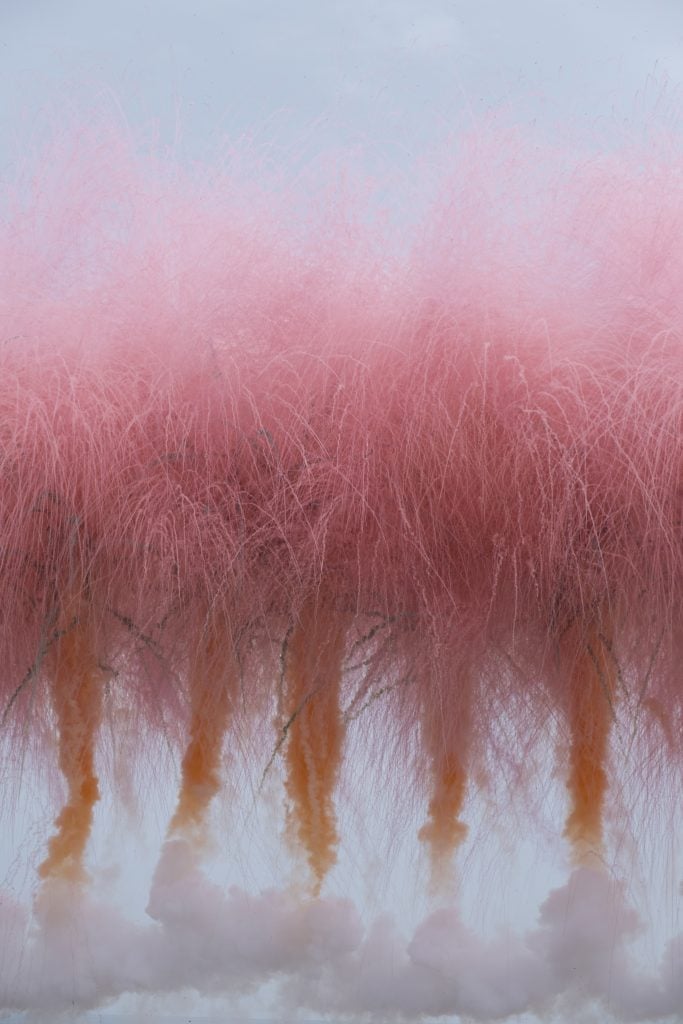
The legendary Chinese artist created a rapturous daytime fireworks display to herald his major new survey show in Tokyo.

William Van Meter

The artist Cai Guo-Qiang turned the noon sky on June 26 into a rhapsodic canvas with Japan’s first daytime fireworks display. Audacious, awe-inspiring, and humbling, When the Sky Blooms with Sakura was more about rapture than bombast. It was also an ephemeral memorial made with fire—the area was devastated by the 2011 tsunami.
Only Cai could deftly wield explosives with such meaning and grace. The 65-year-old Chinese artist has made an entire career out of transforming destruction into beauty.
The midday pyrotechnics were a grandiose preamble and salvo to the opening of his solo show “Ramble in the Cosmos – From Primeval Fireball Onward” at the National Art Center Tokyo (which runs through August 21). The exhibition looks back at projects from 1985 until today and is something of a homecoming–Cai spent nine years in Japan before emigrating to New York. Saint Laurent is co-presenting the exhibition and commissioned the fireworks display.
“Cai’s work reflects the fluidity of contemporary culture while honoring a variety of historic artistic and spiritual traditions,” says Saint Laurent creative director Anthony Vaccarello, “encouraging viewers to reflect on who they are and why they are here.”
We caught up with Cai and asked the artist about accentuating the sunlit sky, his new show, and life in general.
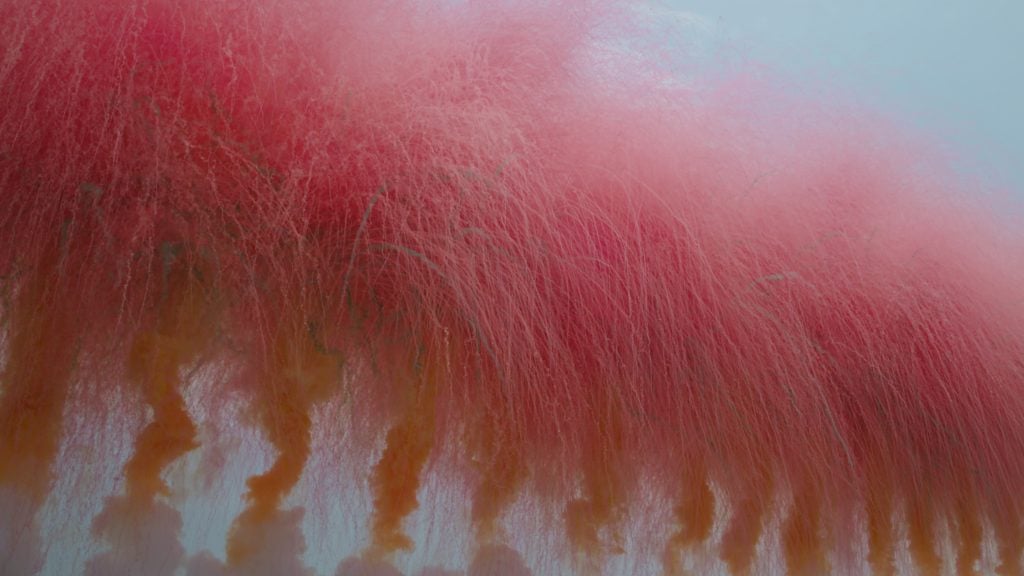
Cai Guo Qiang, When the Sky Blooms With Sakura, commissioned by Anthony Vaccarello for Saint Laurent.
This interview has been edited and condensed for space.
Fireworks are specific to cultures, such as in China and the USA, two countries to which you have strong ties. They’re also universal. Whatever nationalistic slant they’re used for is counteracted by the pure aesthetic joy they often generate. Do you ever ponder their political usage or is there complete erasure of it?
In the beginning, I felt nervous, anxious, excited, and curious about the explosive energy brought by gunpowder, which was important to me. People often assume I like fireworks, but what I like is explosion! The purity and abstractness of the energy, as well as the unexpectedness and the uncontrollable chaos in that moment.
Art is like a space time tunnel. It allows me to travel between pure art and social reality.
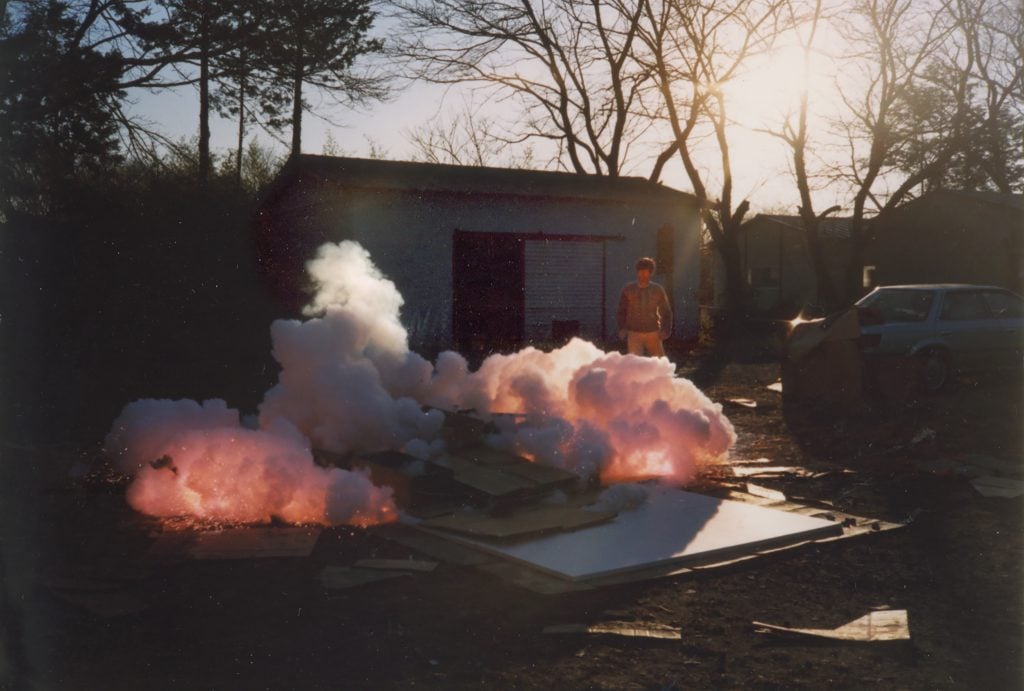
Cai Guo-Qiang during the creation of Fetus Movement II: Project for Extraterrestrials No. 9 (1991). Photo courtesy Cai Studio.
Fireworks are an ancient Chinese medium. Does their origin and history factor into your using them as a tool?
In my hometown, whenever there is a festival, marriage, or when a baby is born, firecrackers would be ignited. Growing up, I could also hear the sounds of cannons firing across the Taiwan strait.
My first four years in Japan were the most difficult and rewarding in my entire life. I began to base my consideration and creation in the notion of “humanity in the cosmos and the cosmic nature in humans.” My aim was to transcend the limits of matter and space-time and to seek the truth of an eternal connection between humans and the universe. I also gradually transitioned from “borrowing from primordial time” and “borrowing from nature” to a cosmology based on the relationship between mankind and nature, including a more holistic view integrating mankind, art, and nature.
I came to recognize that the essence of gunpowder is the same as the energy and spirit that human beings possessed from the beginning of their evolution, as well as the essence of the primordial universe. When artworks are created on this basis, gunpowder explosions become more than just a means.
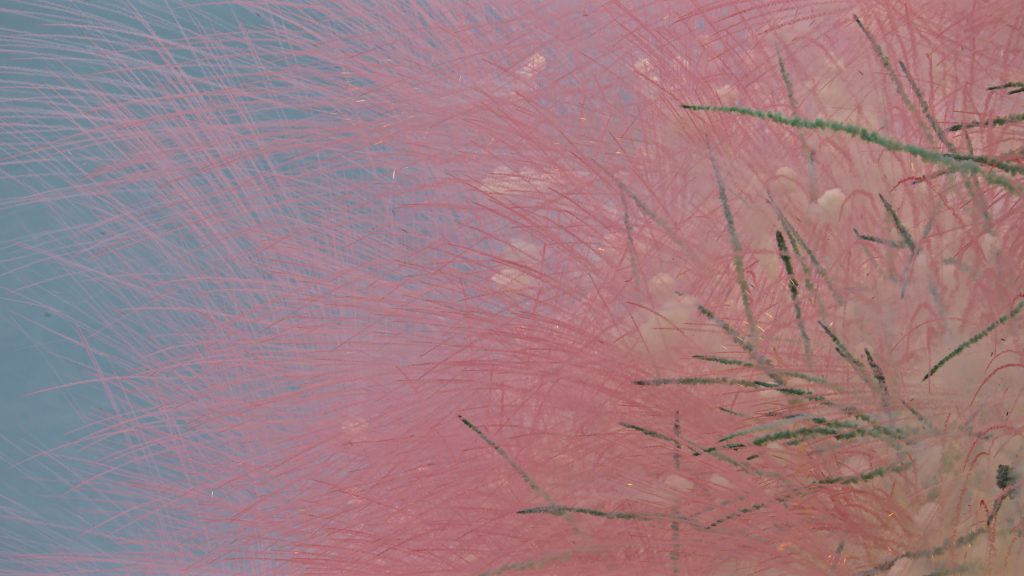
Cai Guo Qiang, When the Sky Blooms With Sakura, commissioned by Anthony Vaccarello for Saint Laurent.
You have been using gunpowder as a tool for a long time. Does it speak to you in a deeper way or a different way than it did when you were younger?
When I just started using gunpowder to make works, I laid down the canvas in the big hall in my home, or in the backyard, and just let it burn freely. Oftentimes, it burned holes through the canvas. But when my grandma saw the burning fire, she took the linen rag in front of the hall gate, and put it on the burning fire, thereby putting out the fire with a “puff.” It is my grandma who let me know that while igniting the fire is important, extinguishing the fire is more so.
The charisma of gunpowder lies in its uncontrollability and spontaneity. The job of the artist is to fight between totalitarian control and utter freedom, as well as the desire to relinquish control.
Not only is it a dialogue with gunpowder, but also with the natural environment, energy, the unseen world, societal regulations, politics, and the uncertainties brought by new technologies. Perhaps gunpowder is the “lover” whom I will never get tired of for my entire life.
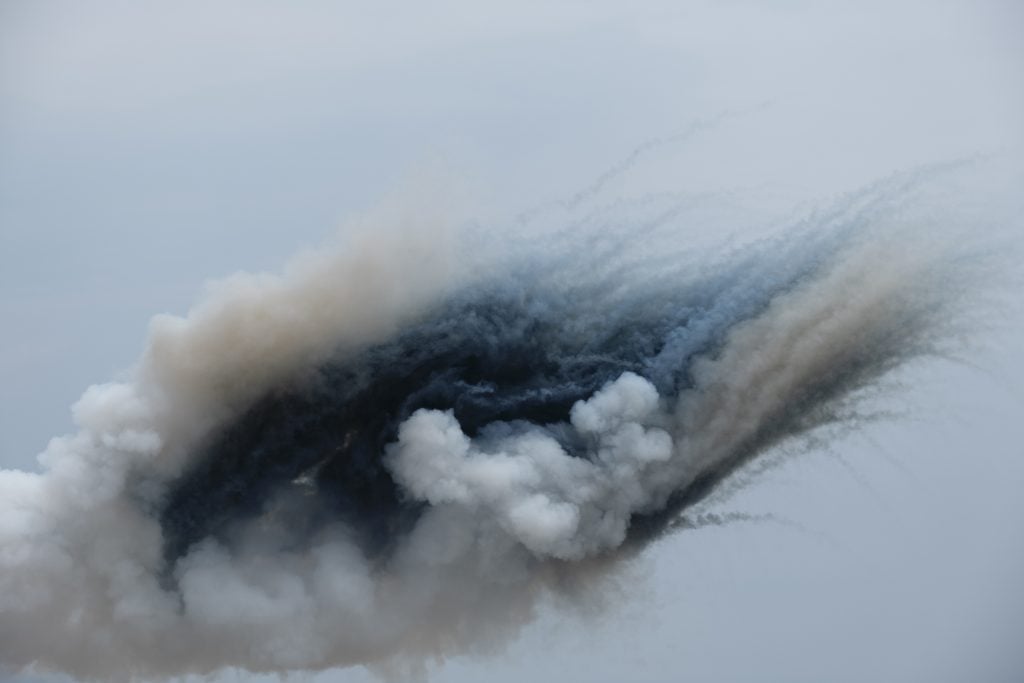
Cai Guo Qiang, When the Sky Blooms With Sakura, commissioned by Anthony Vaccarello for Saint Laurent.
What was the experience like looking back to assemble past work for this exhibition? Was it emotional?
During the 1980s and ’90s, I passionately contemplated the human and global issues of the 20th century, such as materialism, moral decline, environmental destruction, and the future of the cosmos. I pondered over these issues as if I were an extraterrestrial. Reality often felt constraining, but the stars in the sky were always like guiding lights, illuminating my “ramble in the cosmos.”
I am also surprised to find no record of my thoughts on the process of moving from Japan to the United States. I could only tell from the sketches for various projects that I was already in New York. I had left the place where I had put down my roots and forayed into a world unknown to me then, but from a cosmic perspective, did it look like I had simply moved houses in the same village?
I can also see how I grew less and less metaphysical over time, redirecting my attention to sociopolitical realities. The problems of the Western world became my own problems. In retrospect, I understand that while I was in Japan, the problems of the Eastern world were more or less my problems, too.
The essence, energy, and spirit from the depths of Eastern culture—[such as] “the only doctrine is the lack of doctrine,” “to be free and at one’s ease, to be natural and of oneself”—still continue to guide my imagination as it soars through the skies to plant seeds that blossom in different cultures across the Earth.
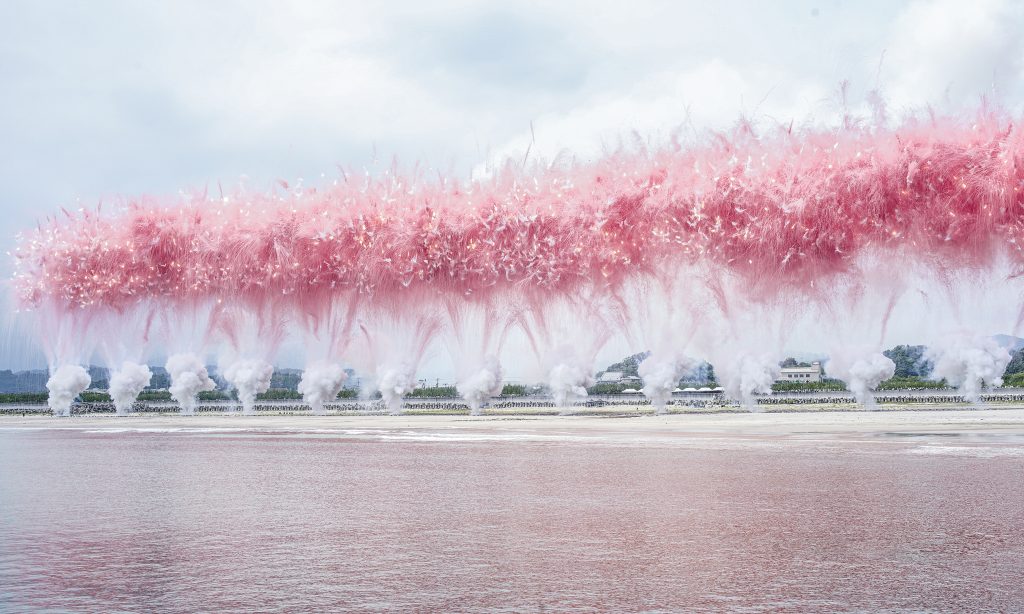
Cai Guo Qiang, When the Sky Blooms With Sakura, commissioned by Anthony Vaccarello for Saint Laurent.
Another aspect of organizing this exhibition on my return to Japan is to express my gratitude. My first few years in Japan were both extraordinarily difficult and immensely rewarding. Although various challenges were also present in my life afterward, my life can generally be described with this frequently used Chinese saying: Like a spring emerging from the mountains of my hometown, this steady trickle never dried up because there were so many people, in a relay of companionship, who accompanied, propelled, and guided me toward the distant horizons of the celestial oceans.
I often feel that I am an adored child of God. I grew up under the support of the whole world, while so many hardworking artists still end up in poverty. But where is God? It has been important people and opportunities that have helped me and shaped me into who I am. Countless persons and stories, both known and unknown to me, nourished my young self from my hometown to Japan, from then to now. Through the grand journey of the Ramble in the Cosmos exhibition at NACT, I have reminisced on all the people who have given me strength along this journey. My heart is filled with gratitude for the visible and the unseen forces.
Primeval Fireball is the explosion from the convergence of these energies.
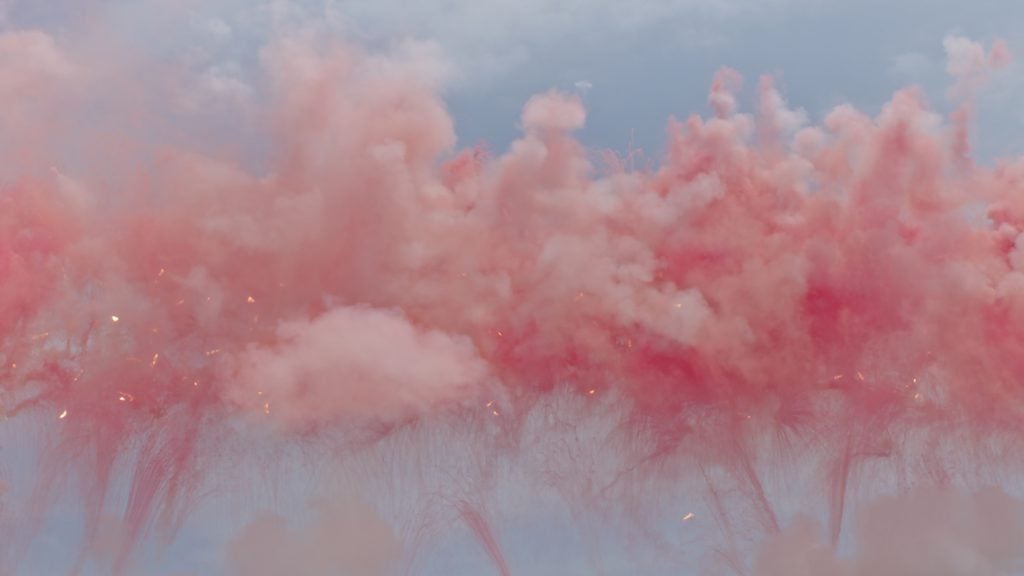
Cai Guo Qiang, When the Sky Blooms With Sakura, commissioned by Anthony Vaccarello for Saint Laurent.
Why did you want the fireworks to be in daytime? How did you develop this as a direction and why?
Nighttime fireworks rely on light for their effects; their brilliant bursts will return to darkness. Daytime fireworks rely on smoke to take shape; although there is also a poetic purpose, they are superimposed on social realities and nature. The two types of fireworks carry different aesthetics. Now it seems to me that daytime fireworks are closer to paintings, but they are also subject to greater influence from the nature.
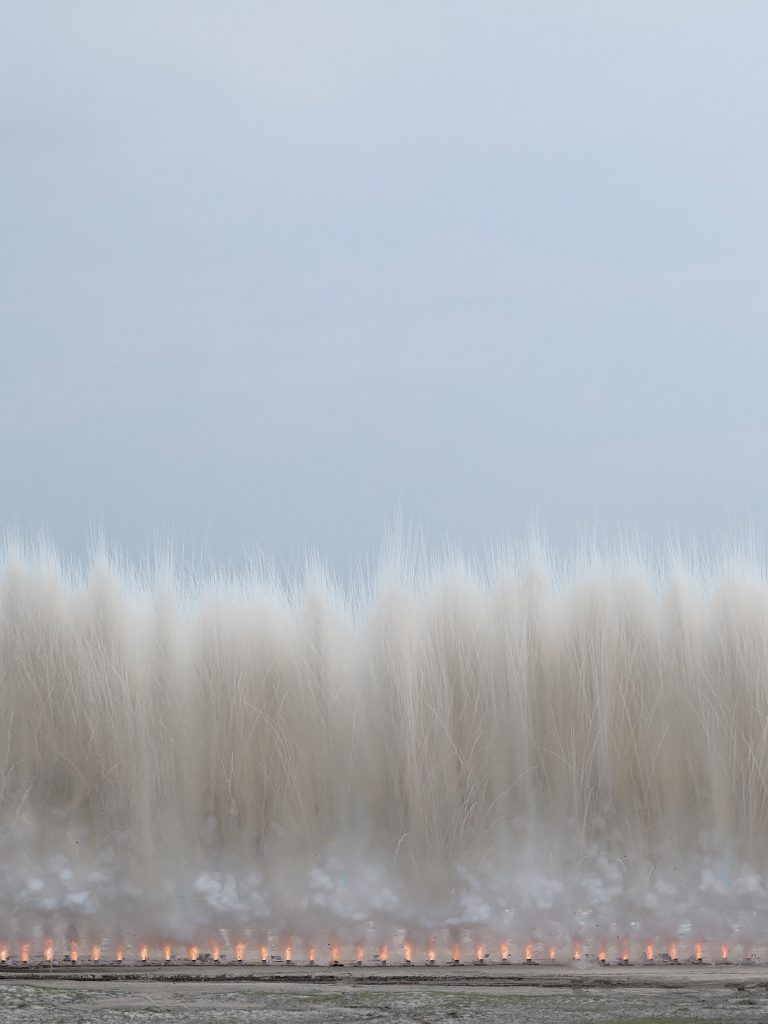
Cai Guo Qiang, When the Sky Blooms With Sakura, commissioned by Anthony Vaccarello for Saint Laurent.
This land has suffered greatly from the 2011 earthquake, tsunami, and nuclear disaster. I remember my friends from Iwaki told me back then that they wish to plant sakura [translated: cherry blossoms] on the hills of their hometown. They said, “These sakura represent remorse, as our generation constructed the nuclear power plants, leaving a profound disaster for future generations.”
The nearly 40,000 fireworks served as a requiem to the lost lives, and a mourning for the harm inflicted upon nature by mankind. It will be both a commemoration of human bonds and a reverence for the natural world.
More Trending Stories: